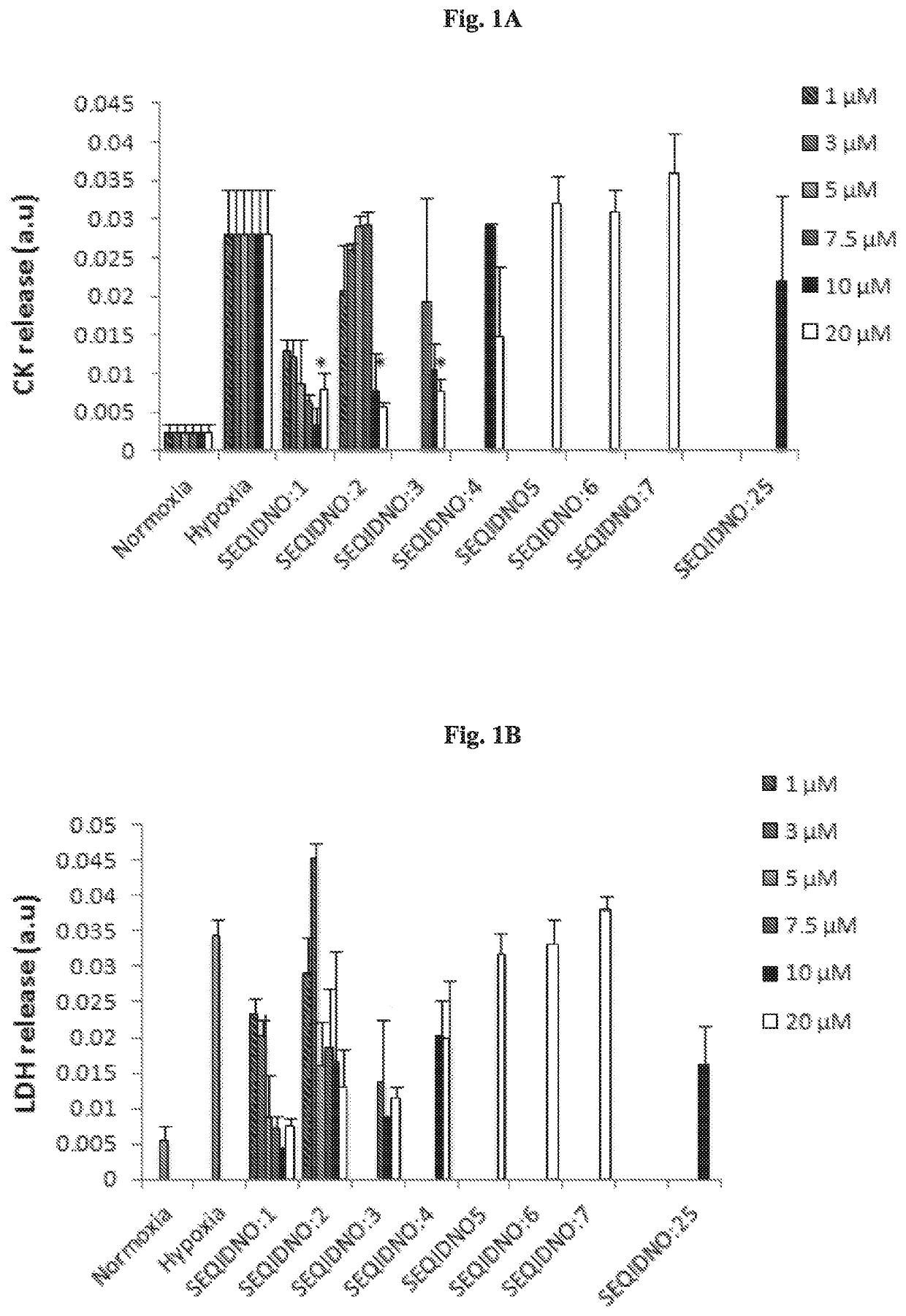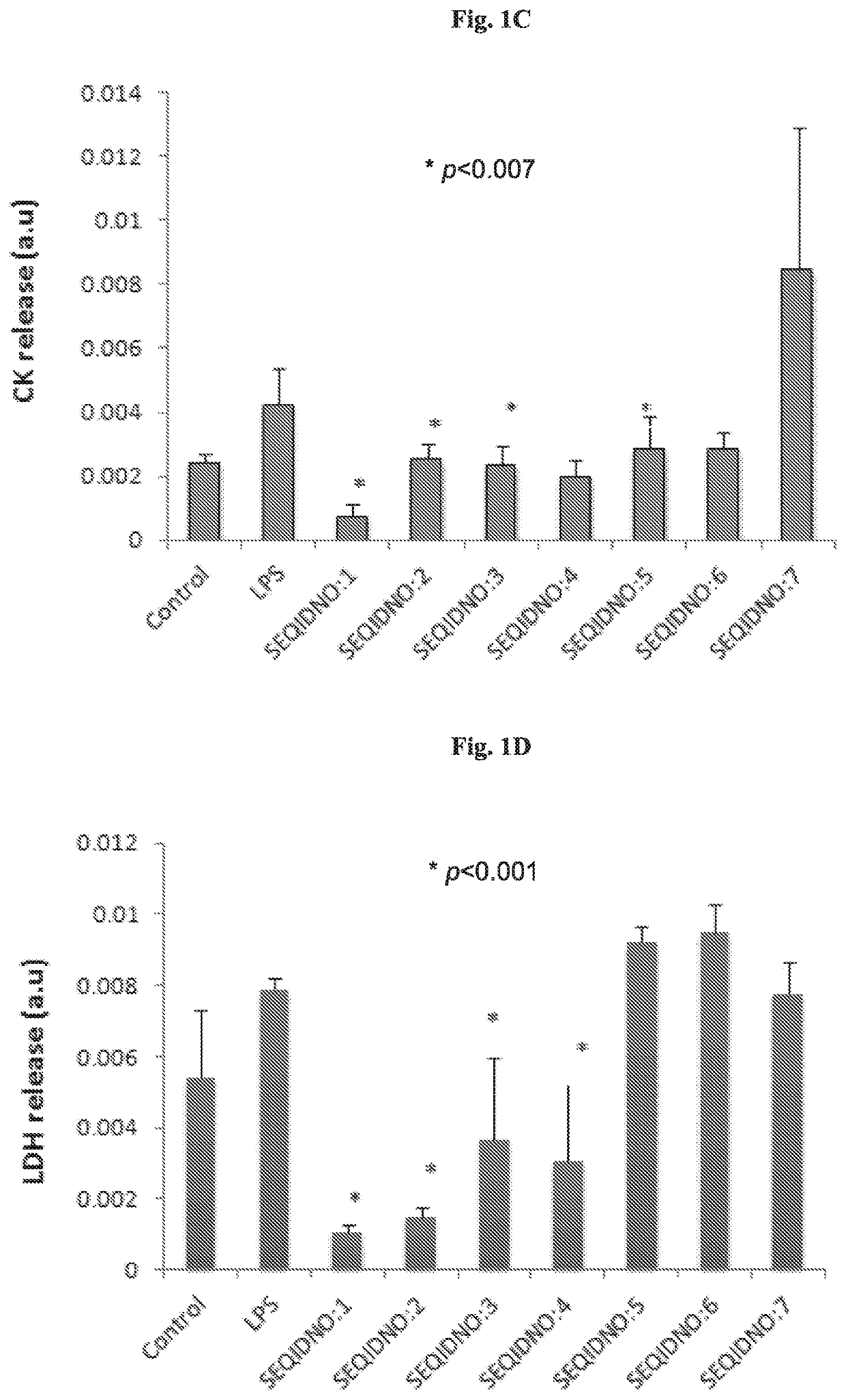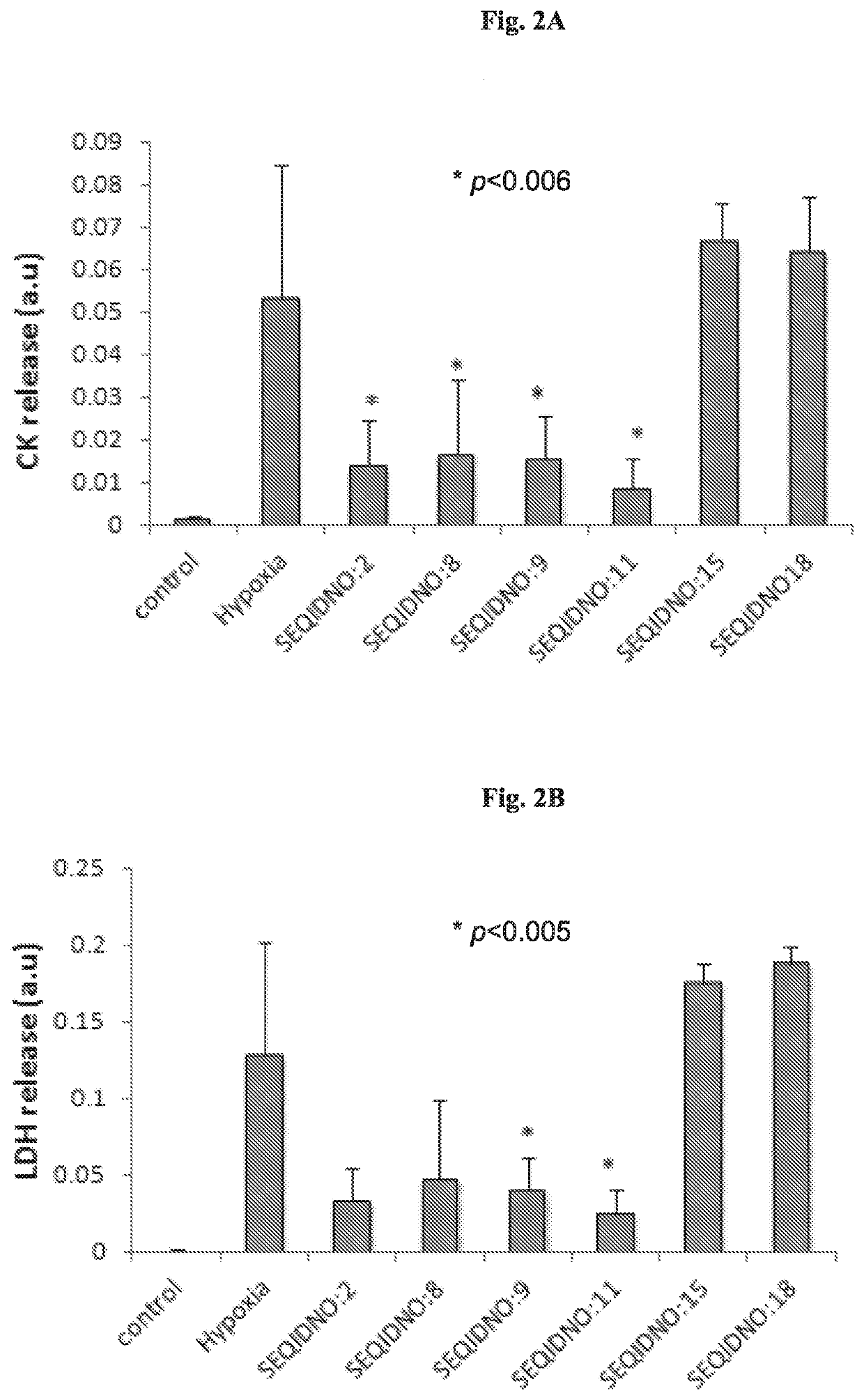Toll-like receptor 4 (TLR4) inhibitors and use thereof
a technology of toll-like receptors and inhibitors, which is applied in the direction of peptides, drug compositions, peptides, etc., can solve the problems of high mortality, sepsis is the leading cause of mortality, and various pathological situations
- Summary
- Abstract
- Description
- Claims
- Application Information
AI Technical Summary
Benefits of technology
Problems solved by technology
Method used
Image
Examples
example 1
[0223]Synthesis of peptides and peptidomimetics of SEQ ID NOs: 1-24 Synthesis of peptide and peptidomimetics of SEQ ID NOs: 1-24 was carried out using a Rink amide resin as described in Materials and Methods. An acetyl group was substituted at the N-terminus to mimic the amide bond of the original peptide, and to prevent the N-terminus from becoming positively charged.
[0224]SEQ ID NOs:1 and 2 served as basic sequences and based thereon most of the peptides and peptidomimetics were designed and synthesized.
[0225]Peptidomimetic of SEQ ID NO:7 is similar in structure to SEQ ID NO:5 except for a cleavable protecting group (OtBu) maintained on the side chain of Glu. Corresponding similarity exists also between SEQ ID NO: 18 and SEQ ID NO:20, but β-Ala in SEQ ID NO: 18 is replaced with Ala in SEQ ID NO:20. Peptidomimetics comprising tert-butylated Glu residue have increased lipophilicity and, in addition, the presence of the bulky group near a peptide bond makes the molecule more stable a...
example 2
Synthesis of Compounds PM1-PM10
[0263]Compounds PM1-PM10 were synthesized according to a procedure presented in Scheme 1, as follows:
[0264](a) 2,4-dichloro-5-methylpyrimidine (compound 1) (12.35 mmol, 2.00 g) was dissolved in 10 ml of dry ethanol, and a solution of sodium ethoxide (3 equivalents, 37.04 mmol) in 27 ml ethanol was added slowly. The mixture was heated to about 60° C. for 1 hour. The sodium chloride was filtered off; ethanol was removed by reduced pressure to afford a crude material, which was dissolved again in ethyl ether, washed with water and with brine, dried and the solvent was removed under reduced pressure so as to obtain the di-ethyl ester derivative of 1 (compound 2). The total yield was 77% (beige solid).
[0265]Rf (TLC)=0.15 (DCM / hexane, 6:4). 1HNMR: (400 MHz, CDCl3), δH (ppm): 1.30 (t, J=7.2 Hz, 3H, COCH2CH3), 1.32 (t, J=7.2 Hz, 3H, CH3CCOCH2CH3), 1.95 (d, J=0.8 Hz, 3H, CH3—Ar), 4.27 (q, J=7.2 Hz, 2H, CH3CCOCH2CH3), 4.34 (q, J=7.2 Hz, 2H, COCH2CH3), 7.86 (d, J...
example 3
Synthesis of Unnatural Amino Acid (Compound 10)
[0302]An unnatural amino acid derived from naphthalene, herein designated compound 10, was synthesized for the purpose of, e.g., replacing phenylalanine (Phe), in exemplary peptidomimetics provided herein. Compound 10 is more lipophilic than Phe and, when introduced into a peptide, may increase the lipophilicity and metabolic stability of the peptide. The synthetic pathway, shown in Scheme 2, has the following steps.
(a) Synthesis of 2-amino-2-(naphthalen-1-yl)acetonitrile (Compound 8)
[0303]A 7 N ammonia solution in methanol (NH3 / MeOH) (10 ml) was added rapidly, at 0° C., to 1-naphthaldehyde (compound 7) (6.40 mmol, 1.00 g) and stirred for 20 min.
[0304]Thereafter, trimethylsilyl cyanide (TMSCN) (9.60 mmol) was added slowly and stirred at RT overnight (“Strecker synthesis”). Methanol was removed under reduced pressure, ethyl acetate was added, and then the reaction mixture was extracted with water, the organic layer was separated, washed ...
PUM
| Property | Measurement | Unit |
|---|---|---|
| temperature | aaaaa | aaaaa |
| temperature | aaaaa | aaaaa |
| temperature | aaaaa | aaaaa |
Abstract
Description
Claims
Application Information
 Login to View More
Login to View More - R&D Engineer
- R&D Manager
- IP Professional
- Industry Leading Data Capabilities
- Powerful AI technology
- Patent DNA Extraction
Browse by: Latest US Patents, China's latest patents, Technical Efficacy Thesaurus, Application Domain, Technology Topic, Popular Technical Reports.
© 2024 PatSnap. All rights reserved.Legal|Privacy policy|Modern Slavery Act Transparency Statement|Sitemap|About US| Contact US: help@patsnap.com










